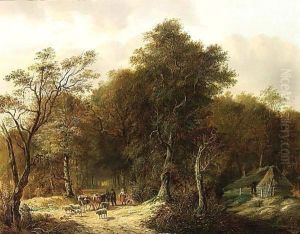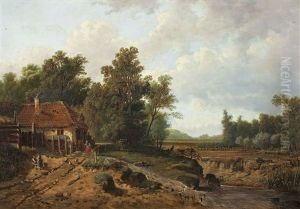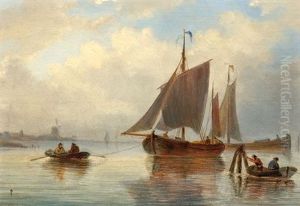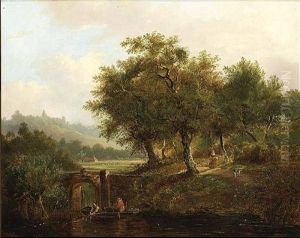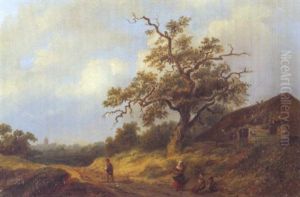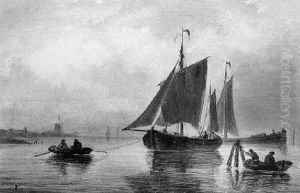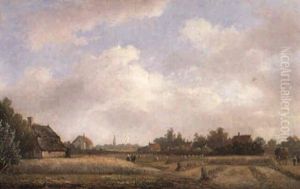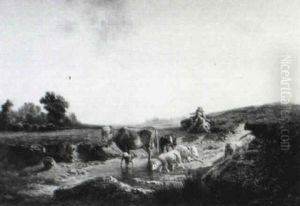Johan Diderik Cornelis Veltens Paintings
Johan Diderik Cornelis Veltens was a Dutch painter and lithographer known for his contributions to the 19th-century Dutch art scene. Born in 1826, Veltens came into a world where art was profoundly influenced by Romanticism, focusing on emotion and individualism, as well as the beauty of nature and the past. Throughout his career, Veltens navigated these influences, incorporating them into his work while also demonstrating an affinity for the Dutch landscape and domestic scenes, which would become hallmarks of his artistic legacy.
During his lifetime, Veltens was part of a vibrant Dutch art community that was exploring new ways of expression and techniques in painting and printmaking. He trained at the Royal Academy of Fine Arts, where he honed his skills in painting and lithography, a printing process that allows for the creation of artworks through the use of a stone or metal plate. This technique was relatively new at the time and offered artists a way to reproduce their works for a broader audience, something Veltens utilized to spread his artistic vision.
Veltens' work is characterized by its detailed depiction of everyday life, serene landscapes, and occasionally, religious themes. His landscapes, in particular, showcase his ability to capture the subtle interplay of light and shadow, a testament to his observation skills and his deep appreciation for the Dutch countryside. These works not only reflect the beauty of the Netherlands but also serve as a document of the country's rural life during the 19th century.
Despite his talents, Johan Diderik Cornelis Veltens did not gain the same level of fame as some of his contemporaries. Nonetheless, his contributions to Dutch art have been recognized in various exhibitions and collections, highlighting his role in the development of 19th-century Dutch painting and printmaking. Veltens passed away in 1914, leaving behind a body of work that continues to be appreciated for its craftsmanship and portrayal of Dutch life and landscapes.
